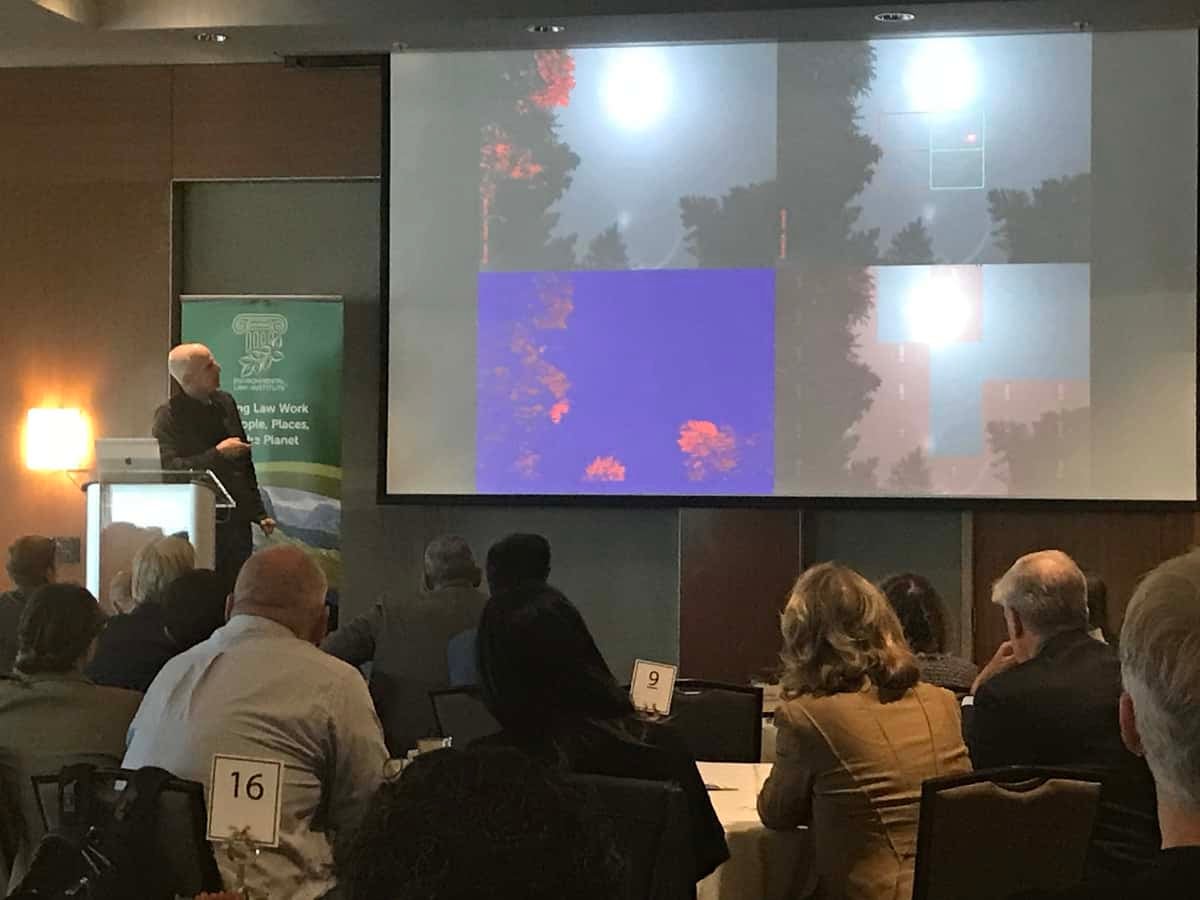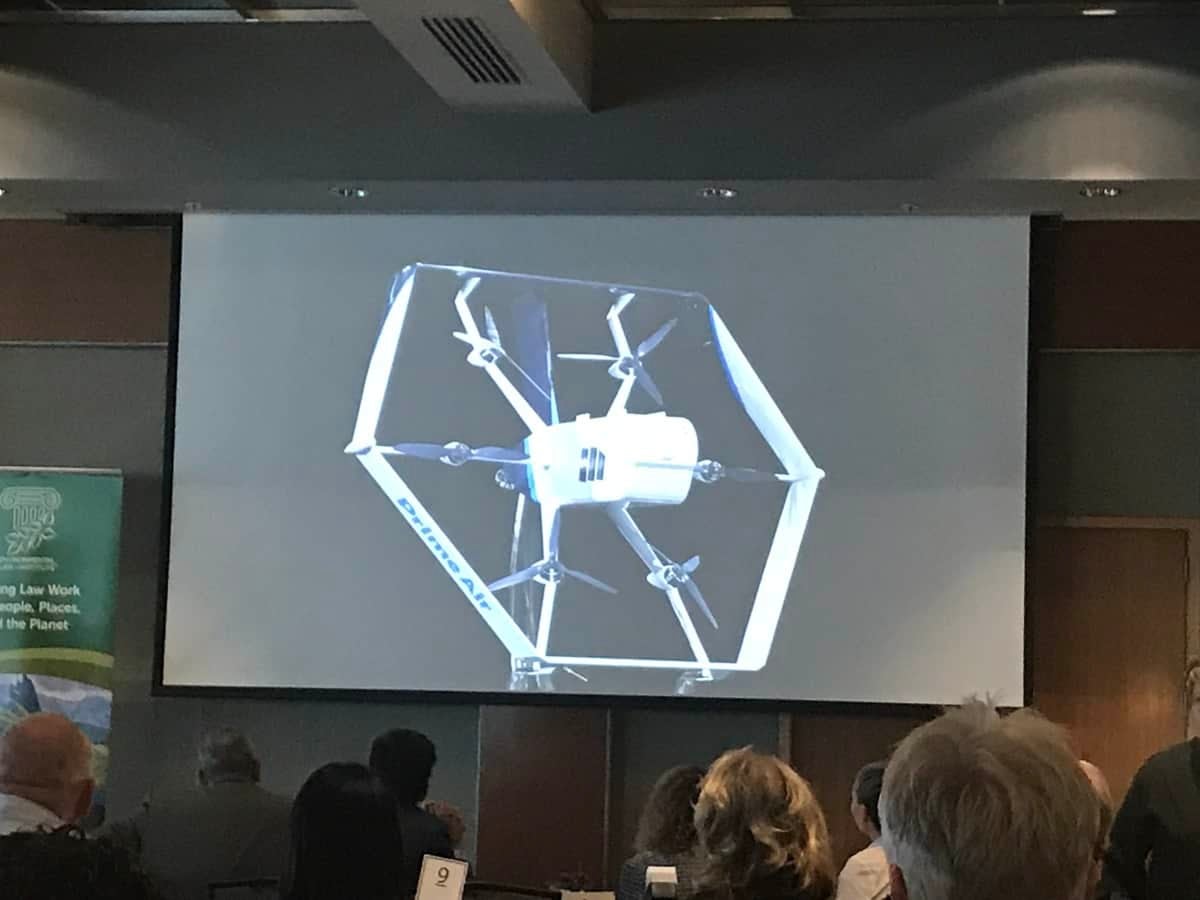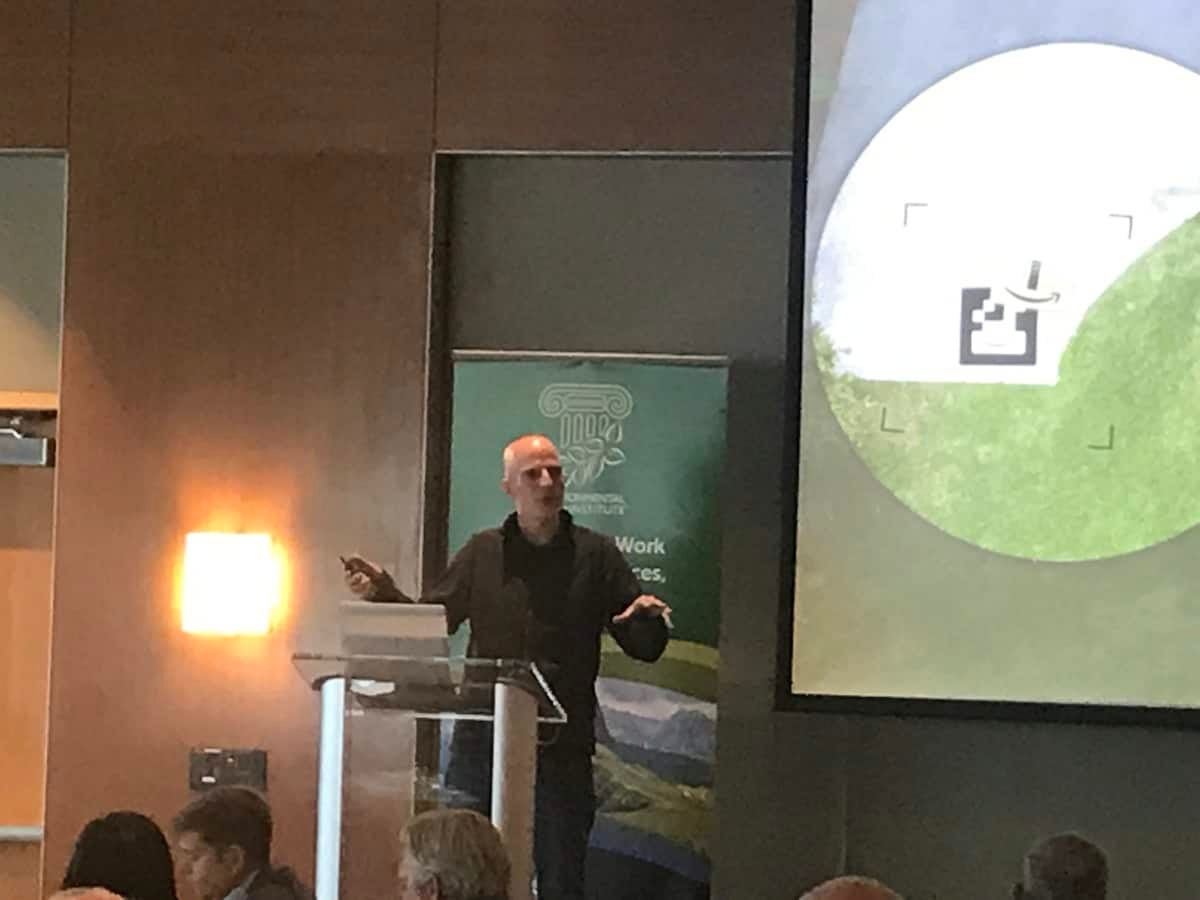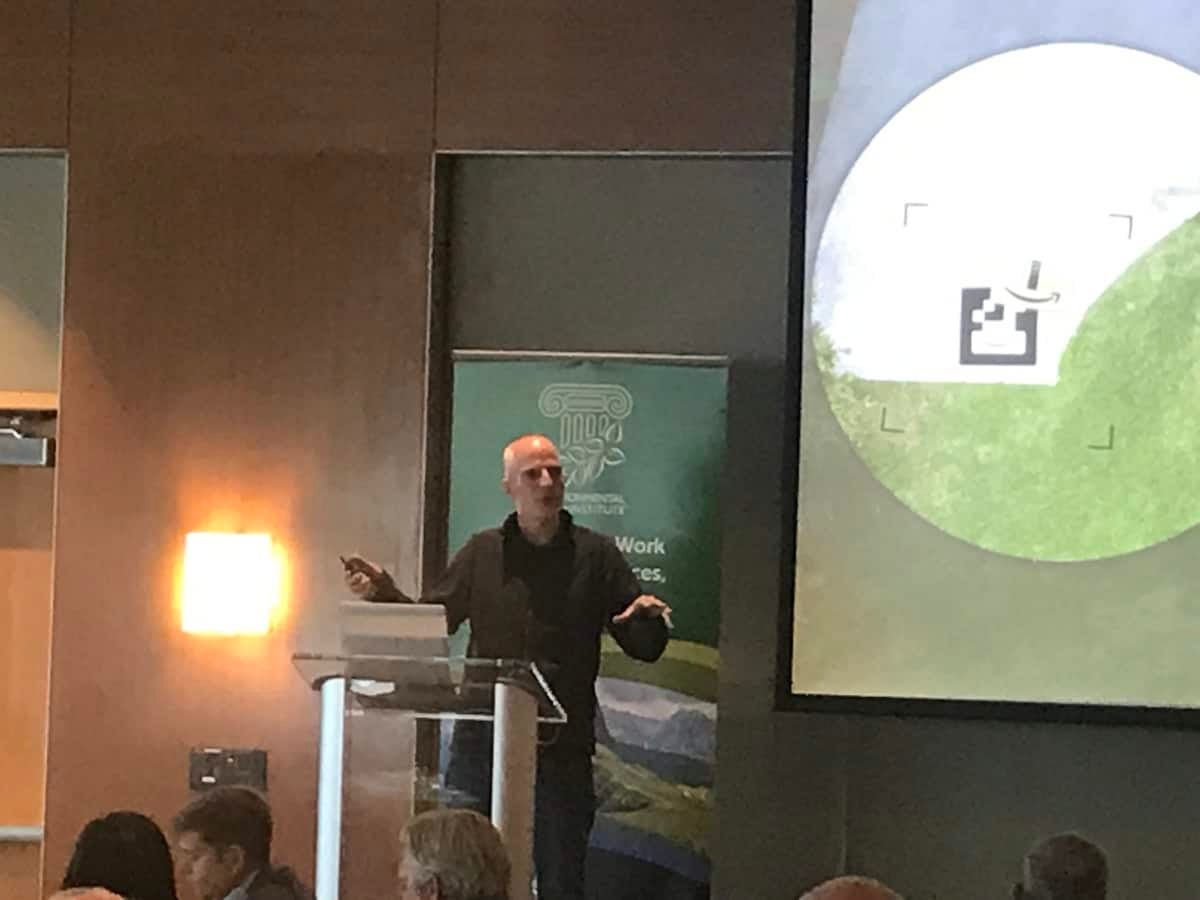Amazon (NASDAQ: AMZN) Prime Air vice president Gur Kimchi held an audience of clean technology and environmental policy experts spellbound as he laid out the company’s vision of unmanned aerial vehicles (UAVs) darting around the sky delivering packages to consumers in 30 minutes or less.
”We are very comfortable that the economics of this business are great,” said Kimchi, in a reference to the Prime Air delivery drone, an electric aircraft that is capable of both a helicopter-like vertical takeoff and landing as well as forward flight. “It is the safest and most environmentally responsible and also highly scalable.”

How drones will save the world
Kimchi delivered his remarks during a lunchtime keynote for GreenTech 2019, a conference hosted by the Environmental Law Institute in Seattle this week.
The two-day meeting, designed to show how new technologies can advance environmental protection, took place less than a month after Amazon announced an ambitious climate change strategy putting the e-giant on a path to carbon neutrality by 2040.
To kickstart the climate change initiative, the e-retailer announced it was purchasing 100,000 electric delivery vans, the largest electric vehicle order ever.
Just as that purchase is expected to set a new bar for greening the delivery industry, the Prime Air program is designed to make the logistics sector even more efficient, Kimchi said.
“Every package delivered by a drone is a package not delivered by a car,” he said. “It’s a net positive.”
Safety first
Despite the nod to planetary benefits, Kimchi devoted much of his 50-minute talk to safety, a top priority for autonomous vehicle companies seeking to allay consumer fears about self-driving vehicle technology – on the ground and in the sky.
Amazon engineers designed the latest model, a cartwheel-shaped pod that has a range of 7.5 miles and is six feet at its longest point, around several key principles. The first, Kimchi said, is making the drone “independently safe.”

If you’re driving a car equipped with the latest driver assist technology, and you are accelerating toward a wall ahead of you, the car will hit the wall, he explained. But if you are on a horse, and you ride toward the wall, “the horse will stop on its own.”
Amazon basically wants drones to be more like horses and less like cars. “Everything has to be on the drone,” he said. “It has to be safe on its own.”
Elaborating on that theme, Kimchi said two key metrics are continuously evaluated after the drone is released – is the airspace safe, allowing the delivery to continue, and is the ground safe to approach.
“If the drone decides the ground is not safe to approach, the drone will say, ‘I’m unhappy with the backyard, and I will fly home, thank you very much.’ The drone will check itself. It’s impossible for a human operator to say, ‘Don’t worry about it, it’s safe.’”
Human vs. robot
Kimchi displayed a series of slides and video clips showing the world from the drone and human points of view. Using a combination of heat-sensing cameras, depth cameras and machine learning, the UAV navigates around obstacles – airplanes, birds, a person in a backyard – or aborts the delivery mission.
“Computers are really, really good at paying attention. They don’t get bored,” observed Kimchi, after pitting audience against drone to see who could identify obstacles more quickly. (The drone won, hands down.)
The competition
Amazon joins a flock of startups and established companies working on futuristic autonomous airborne delivery projects. In April, Wing Aviation, the drone delivery arm of Google’s parent company Alphabet, became the first American company granted FAA approval for commercial delivery.
Earlier this week, UPS [NYSE: UPS] announced its own drone delivery first – the logistics giant won approval from the FAA to run drone services with no limit on size or scope of operations.

Even as the regulatory environment becomes more hospitable, concerns continue to mount over the safety and pollution impacts of e-commerce – and how they might worsen, not improve with drone delivery.
When delivery times get shorter, carbon footprints get bigger, a member of the GreenTech audience commented during a Q&A following Kimchi’s talk.
Generally speaking, that is true, Kimchi acknowledged.
“Our biggest frustration as a company is the dial between faster or more responsible,” he said. To get around that problem, “we decided to make ‘ors’ ‘ands,’” he said. “It’s faster and more responsible and economical.”
Checking off all these boxes is a hugely challenging task, Kimchi said. “We could have shipped a product four years ago in less responsible ways.”

Kimchi did not say when the drone would be ready for commercial use, but earlier this year, executives announced Prime Air would be delivering packages to customers “in months.”
Labor concerns
Not everyone is eager to see it get off the ground. Heckled by an audience member about the 30-minute drone deliveries putting more pressure on workers, Kimchi said with Prime Air “there are no workers. This doesn’t have a negative impact. It’s a positive.”
Kimchi indicated that everyone at Amazon, executives included, put in time working in the company’s fulfillment centers.
He also criticized media reports of adverse working conditions in the company’s warehouses, saying “the press is the press and likes clickbait,” Kimchi invited the heckler to take a warehouse tour. “We are very responsible,” he said.
Responding to another question from the audience, he debunked concerns about drones taking over airspace, noting that Prime Air has conducted simulations showing that even if every single Amazon order is delivered by drone only a handful of drones would be in the sky at any given time.
An Amazon spokesperson did not immediately respond to FreightWaves’ request for further explanation.
Kimchi said Prime Air uses only internal hardware and software and that the company has erected “an ethical wall” between the project and potential uses by the U.S. Department of Defense.
“There will be no military applications,” he said.











Matt
I don’t care about military uses. I care about privacy. How much data and information about its surroundings are these things going to soak up as the pass overhead?